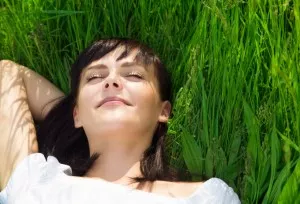
If you’ve ever walked the supplement aisles of a grocery store, you’ve probably noticed that there are very well-defined differences in men’s vs. women’s supplements. This same principle applies not only to blends of vitamins, minerals, and herbs in individual products, but also to label-recommended use and dosage amounts. Women have not only their own multivitamins, but also multivitamin varieties, blends catering to reproductive and sexual health, anti-aging formulas, fitness supplements, and (of course) weight loss aids.
In light of these important differences, we figured: Why not magnesium?
In this two part series we’ll explore the unique needs and options that women have for ensuring optimal magnesium. However, before we get into tactics on intake, we first need to tackle the obstacles that women in particular face.
What obstacles do women face in maintaining their magnesium levels?


Such as it is, women have the privilege of some extraordinary biological abilities that can lead to the misfortune of a biological disadvantage when it comes to maintaining optimal magnesium levels.
When one looks at the U.S. RDA for magnesium for women, it paints the picture of a daily magnesium requirement that is lower than that of males. However, these types of one-size-fits-all numbers fail to take into account a multitude of factors that may be leaving us, as individuals, locked in a constant battle with deficiency.
Birth Control & Hormone Replacement
In our article titled Need More Magnesium? 10 Signs to Watch For, we noted that both hormone-based birth control (e.g. “The Pill”) and hormone replacement therapies can cause excessive loss of magnesium due to their estrogen content. These factors specifically impact the female population – and in large numbers.


Based on a 2010 U.S. study, over 34% of women who use contraception are utilizing a hormone-based method – that’s as many as 33.8 million U.S. women at increased risk of magnesium deficiency!
Once we reach the age where birth control ultimately becomes obsolete we are still faced with unavoidable magnesium-depletion. Aging in and of itself means that the body will require more and more nutrients to accomplish the same tasks as our biology loses the efficiency of youth.
As women begin to enter menopause and our estrogen levels become erratic, the stress of the transition combined with unpredictable hormone levels take a toll on the body as a whole. As we go through menopause, it’s common practice for physicians to prescribe not only hormone replacement therapy, but calcium supplements as well. This dynamic duo is a magnesium stripping machine – a Catch 22 given how beneficial magnesium is for menopause, aging, bone health, and stress.
Pregnancy & Breastfeeding
It shouldn’t come as a shock to anyone that growing a life form puts a tremendous amount of stress on the body, or that it also requires a significant increase in nutrient uptake. Even prenatal supplements are a bare minimum recommendation given the state of today’s average diet and lifestyle. Incidence of preeclampsia – a condition physicians traditionally address using magnesium – has risen over the last 30 years. Entering into pregnancy at a deficiency makes it that much more difficult to reach optimal levels, and increases the likelihood of passing on the deficiency to our offspring (an issue which has been linked to infant dermatitis).
For breastfeeding mothers, the task of ensuring that your nutritional intake meets both your own needs as well as your child’s needs extends far beyond birth. Nonetheless, it is often during this time that women tend to discontinue prenatal vitamins and other habits they had previously used to help boost health during pregnancy. Instead, experts recommend continuing these healthy practices throughout the breastfeeding period. In order to build the best food possible for our growing infant, our bodies pull minerals from our own stores to meet those needs.
Combine our bodies’ marathon requirements with the sleepless nights and everyday stresses of having an infant, and it’s safe to say that minerals like magnesium are leaving the body like sand in a sieve!
Antibiotics
Another major factor is magnesium-depleting antibiotics – something that few of us can say we haven’t been exposed to. Why it is this relevant to females specifically? It’s the bane of every woman’s existence – urinary tract infections.
Although experienced in men as well, UTI’s are so rampant among women that over 50% of women have reported having one by the age of 32. However, despite the illness having a negative impact on your health, the UTI itself is not the primary factor which affects our magnesium levels. That award goes to the most commonly prescribed antibiotics for these infections.
Fluoroquinolones and sulfonamides are both well-known magnesium depletors, taking a heavy toll on your mineral levels in just the brief time they are usually required to be taken. Countless research studies have tracked the damage incurred by their use leading to steep warnings to those especially at risk.
But how many physicians recommended any form of mineral supplement when prescribing these antibiotics? If I guessed based on my own experiences, I would say few to none.
Taking Magnesium Seriously
If any of these factors apply to you, you may need to rethink your magnesium intake, and customize it to make up for the additional loss. Birth control, hormone replacement, reproduction, and antibiotics are only a handful of the factors that can impede our ability to both take in and maintain sufficient amounts of magnesium, but they are ones that impact a significant portion of the female population.
As women, we can take a more proactive and tactical approach when it comes to magnesium consumption and supplementation, and protect ourselves from the far-reaching systems effect of magnesium depletion. In Part 2 of this series, we’ll have some great recommendations and tips to help you on your way to achieving optimal magnesium levels, so make sure to check back in!
In the meantime, take a look at our article Calcium & Magnesium for more information on this critical mineral relationship.

